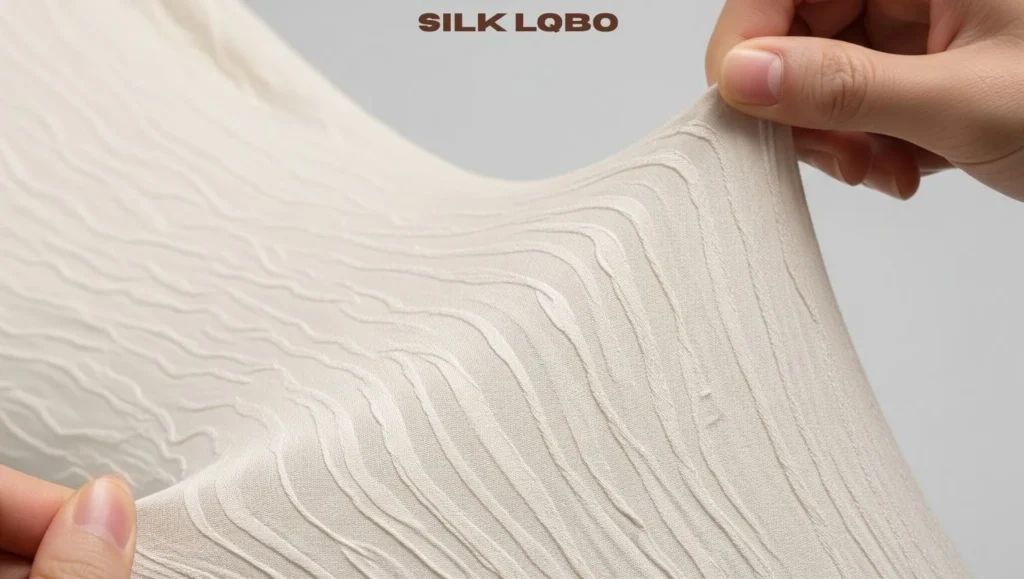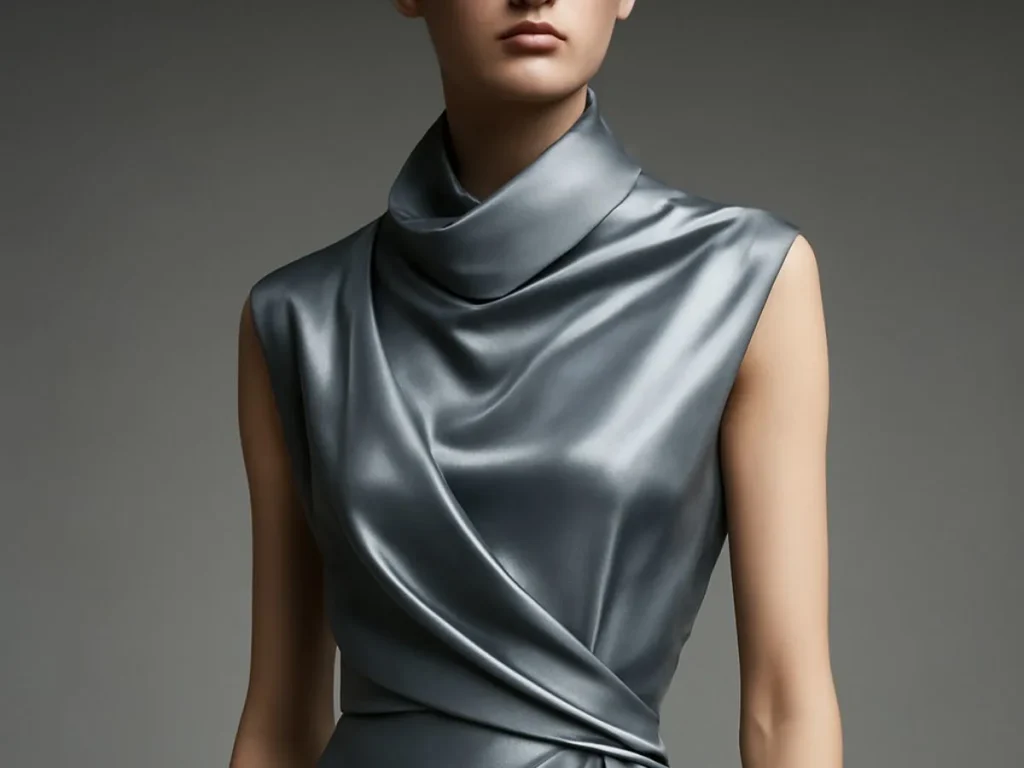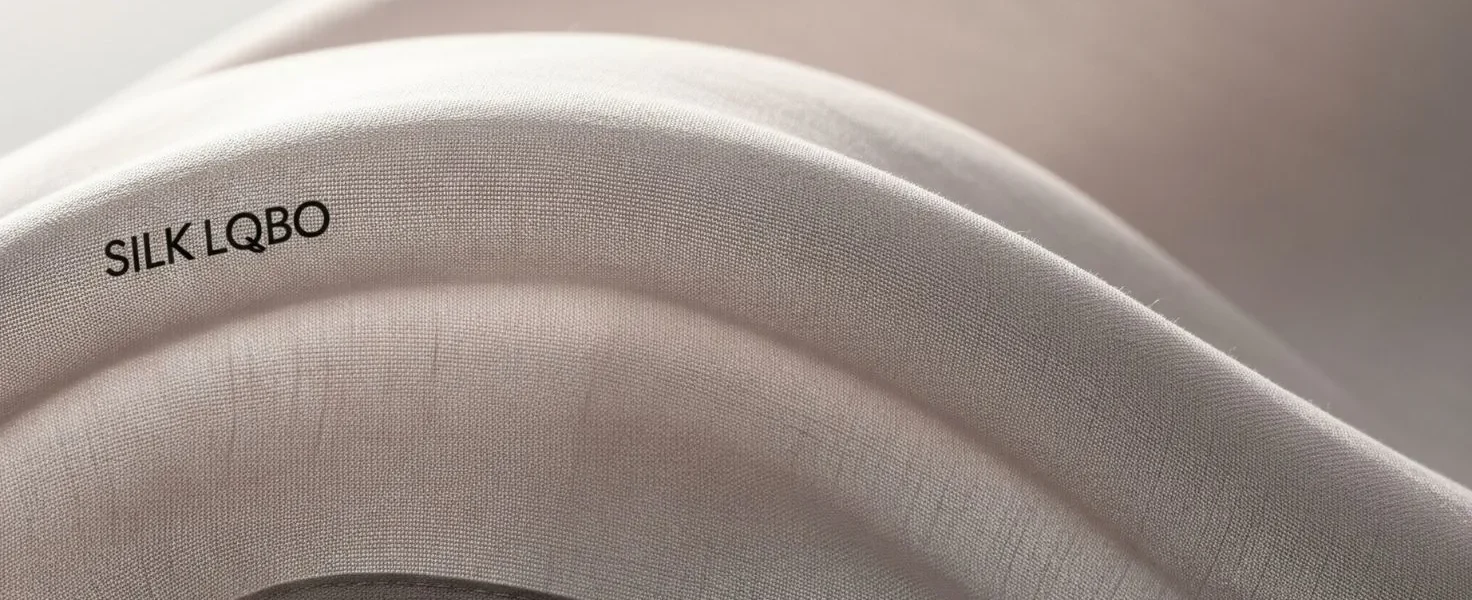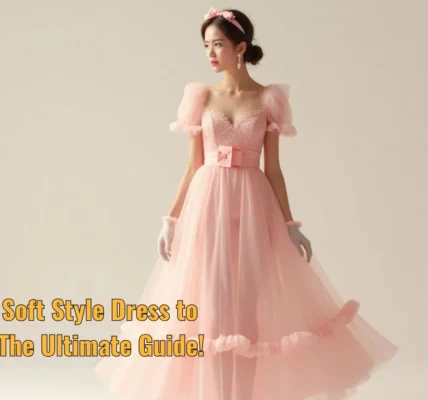Silk LQBO refers to a conceptual, advanced form of silk envisioned to be engineered at the molecular level through a process called Low-Quantum Bond Optimization (LQBO).
While not a currently existing material, this speculative concept highlights future aspirations for textile technology, promising enhanced properties like superior tensile strength, breathability, moisture resistance, and biodegradability.
It represents a vision where biotechnology merges with natural fibers to create sustainable, high-performance materials for industries ranging from technical apparel to medical textiles and eco-fashion.
1. Introduction: The Fabric of Tomorrow’s Dreams
Innovation and sustainability are vital today. The term “Silk LQBO” has started many conversations.
It sparks excitement among textile experts and scientists. This term hints at what future fabrics could be. It suggests a big step forward in natural fiber technology.
Before we dive deeper, it’s important to be clear: Silk LQBO, as discussed here, is a conceptual idea. It is a vision for advanced textiles.
It exists in theory, not yet as a widely available material. This futuristic concept suggests enhancing natural silk at the molecular level.
It promises amazing strength, breathability, and eco-friendly breakdown. Come with us as we explore the idea of Silk LQBO.
We will look at its proposed science, possible uses, and the real scientific progress that inspires such a hopeful future for fabric.
2. What Exactly is Silk LQBO? The Core Idea

At its heart, Silk LQBO means “Low-Quantum Bond Optimization.” This is a proposed, very advanced method to transform natural silk.
Traditional silk comes directly from silkworms. Silk LQBO, however, imagines an engineered silk product. This concept involves changing the silk protein, known as silk fibroin, at its most basic molecular level.
The goal is to carefully adjust its natural structure. This unlocks better performance without losing Silk’s classic beauty. The name “Low-Quantum Bond Optimization” points to a very precise scientific change.
It describes a way to selectively rearrange the hydrogen bonds. These bonds naturally exist within silk proteins’ beta-sheet structures.
By controlling these tiny bonds, scientists could make the material’s inner structure better. This careful “tuning” of protein chains would greatly improve silk’s features. Imagine silk that keeps its softness and shine.
But it also gets much more mechanical strength, resists water better, and controls heat perfectly. This is the promise that the Silk LQBO concept brings to advanced silk technology and biotechnology in fashion.
3. Proposed Benefits: Why Silk LQBO Would Be a Game-Changer

If the ideas behind Silk LQBO came true, many industries could change. This imagined material has many better features. It would be much better than regular silk or even some man-made fabrics. It would lead the way for strong, eco-friendly textiles.
Here are the key benefits it would offer:
Faster Biodegradability and Eco-Friendliness
We need greener choices today. A material that breaks down safely in nature is very valuable. Along with longer life and less pilling, Silk LQBO clothes would look good and stay strong longer.
This would cut down on waste. Its suggested versatility means it could be used in many areas. These go from daily clothes to special medical and aerospace fabrics. This truly shows the power of advanced material properties for a cleaner, better future.
Great Strength and Durability
Normal silk is tough. But LQBO aims for unmatched durability through molecular design. This would make fabrics much harder to tear or wear out. Such toughness would make products last much longer. This helps fight fast fashion.
Better Breathability and Moisture Resistance
This makes it great for sportswear. Many synthetic fabrics trap heat and sweat. Silk LQBO would offer a cool, useful option. It would move moisture away while allowing air to flow.
4. Silk LQBO vs. Traditional Silk: A Hypothetical Comparison

To fully grasp the grand vision of Silk LQBO, let’s compare its imagined traits against common mulberry silk. This table highlights the theoretical progress that “Low-Quantum Bond Optimization” might bring to this age-old fiber.
| Property | Traditional Mulberry Silk | Silk LQBO (Conceptual) |
| Source | Silkworms (Bombyx mori) | Lab-modified silk fibroin protein |
| Biodegradability | High | Very High (Faster Breakdown) |
| Tensile Strength | Moderate | High (Much Stronger) |
| Water Resistance | Low (absorbent) | Moderate to High (Engineered to Resist) |
| Breathability | High | Very High |
| Use in Tech Fields | Rare | Common (e.g., sports, medicine, aerospace) |
| Durability | Moderate, can be delicate | High (Lasts Longer, less pilling) |
This comparison shows why a material like Silk LQBO, if real, would be a huge leap. It mixes the good natural qualities of silk with engineered performance. It solves many of the limitations of regular silk.
5. Envisioned Applications: Where Silk LQBO Could Make an Impact
Silk LQBO’s hypothetical flexibility points to its ability to impact multiple sectors. It goes far beyond normal clothing. Its unique mix of natural origins and engineered abilities makes it ideal for many advanced applications.
5.1. Technical Apparel
Imagine activewear or military uniforms. They would be incredibly light, strong, and comfy. They would adapt to body temperature and resist tough conditions.
Silk LQBO could offer great performance fabrics for athletes, first responders, and adventurers. It gives a natural choice to synthetic blends.
5.2. Medical Textiles
In medicine, being body-friendly is vital. Silk LQBO’s theoretical features, a natural protein base made clean and strong, could make it perfect for medical textiles.
This includes wound dressings that aid healing. It also means surgical stitches that safely dissolve. Even complex tissue scaffolds for new medicine are possible. It avoids extra chemicals often found in synthetics.
5.3. Sustainable & Luxury Fashion
For clothing, especially high-end and eco-fashion, Silk LQBO offers a strong story. It would let us make luxury garments that are super tough.
They would drape beautifully and hold dye well. Plus, they would break down fully in nature. This closes the gap between great looks and eco-responsibility. It moves us toward a true circular economy in textiles.
5.4. Aerospace
Aerospace materials need to be tough. They must be light and stable in heat. Silk LQBO’s proposed high strength and controlled heat properties would be useful.
It could be used for light, high-performance insulation or parts in planes and spacecraft. This helps with fuel use and safety.
5.5. Beyond: Smart Textiles & More
Looking ahead, the idea reaches into smart textiles innovation. Think of clothes with sensors. They could comfortably check vital signs. Or modular fashion items that change shape. All this would be possible because of Silk LQBO’s features.
These varied textile innovations show the deep potential such a material could hold. They drive progress in key industries. They also champion caring for our environment.
6. The Sustainability Promise: Tackling Textiles’ Big Challenges
A key part of the Silk LQBO idea is how well it fits with major sustainability goals. Regular silk is natural. But its making (sericulture) faces criticism. This includes high water use and concerns about silkworms.
The idea behind Silk LQBO aims to fix these issues directly. It offers a greener way to make textiles. By suggesting lab-cultured fibroin, the Silk LQBO idea points to a production method that would use far less water. This is compared to traditional silkworm farms.
More importantly, it offers a path towards ethical fashion. It could remove harm to silkworms entirely. Also, the greater toughness and longer product life of Silk LQBO would directly fight the huge waste from “fast fashion.” Products that last longer mean we buy less often. This lowers our overall environmental impact.
The future vision even includes vegan Silk LQBO. This would come from silk proteins made in plants. This would make the material totally cruelty-free and compostable.
It would attract more buyers who want truly sustainable and ethical fiber choices. Such progress would truly show the ideas of a circular economy in textiles. It would cut waste and use resources well, from start to finish.
7. From Concept to Reality? The Path for Future Textile Breakthroughs (Real-World Context)
Right now, Silk LQBO is a fascinating idea. But the scientific hopes it holds are very real. They form an exciting area in material science breakthroughs.
The textile industry is actively researching. It seeks to make strong, eco-friendly materials. It draws ideas from nature and new engineering.
Yet, moving from an idea to a product like the imagined Silk LQBO has big challenges:
- Cost of Making: Advanced biotech and protein engineering need special labs and complex steps. This makes early production costly. Making enough for everyone is a huge task.
- Public Knowledge: Teaching people about a new, complex material like “engineered silk” needs much effort. This builds trust and demand.
- Certification Gaps: New, truly eco-friendly materials need clear eco-labels and checks. This proves their environmental goodness and gains market trust.
- Supply Chain Needs: Making LQBO silk needs close work between biotech, textile makers, and delivery. This can raise its carbon impact if not done well.
Despite these hurdles, textile research actively works on materials like Silk LQBO. Recombinant spider silk, for example, is a real bio-engineered fiber. Microbes make it.
It shows amazing strength and stretch. This mirrors some of LQBO’s suggested benefits. Other areas, like smart polymers, advanced protein folding, and 3D bioprinting for textiles, are pushing what’s possible.
The search for “Silk LQBO” shows a growing drive. It aims for biomimicry and advanced manufacturing. These create new kinds of sustainable and strong materials.
While LQBO itself is still an idea, the push for such materials is very real. Global needs for new ideas and environmental care fuel it.
Ready to explore more groundbreaking ideas and sustainable innovations in textiles and beyond? Dive into the future with us at Big Timber Buzz!
8. Conclusion
The idea of Silk LQBO gives us a clear look into the future of fibers. It connects ancient natural fibers with new biotechnology.
Though it’s just a concept, it perfectly shows what the industry hopes for. It wants materials that work well and are also truly sustainable and made with care.
This imaginative material, with its proposed “Low-Quantum Bond Optimization,” is a strong sign of how material science is changing.
It aims to meet today’s complex needs while protecting our planet. The ongoing search for materials like Silk LQBO points to a big change in how we think about textiles.
It’s moving past just looks to embrace lasting use, strong function, and deep care for the environment. As biology and engineering mix, the dream of truly game-changing, sustainable materials gets closer.
This starts a new time of smart, eco-friendly new ideas.
9. FAQ
What is Silk LQBO?
Silk LQBO is a conceptual, lab-enhanced version of natural silk. It proposes using “Low-Quantum Bond Optimization” (LQBO). This theoretical process aims to strengthen silk protein at a molecular level. It would make it more durable, breathable, moisture-resistant, and biodegradable than traditional silk. It blends biotechnology with textile innovation as a future idea.
How is Silk LQBO different from traditional silk?
Silk LQBO would aim to keep the softness and shine of regular silk. But it would offer much better theoretical strength, stretch, and environmental resilience. It would ideally last longer and perform better under stress. It is designed for high-tech, medical, or sustainable fashion uses. Conventional silk is less suited for such tough roles.
Is Silk LQBO environmentally friendly?
Conceptually, Silk LQBO is designed with sustainability at its core. Imagined as a biodegradable material, it aims to reduce environmental impact. Rather than relying on traditional silk production, it could be lab-grown without harming silkworms. Additionally, its theoretical water and energy footprint is significantly lower than that of standard silk or synthetic alternatives. Some innovative ideas even explore vegan variations made from plant-based proteins.
Where is Silk LQBO used today?
Silk LQBO is not a real material available to buy today. If it becomes real, its proposed uses include luxury and performance fashion. Also, medical textiles (like wound dressings), sportswear, and aerospace fabrics. It is valued in theory for mixing natural origins with high-tech abilities.
Is Silk LQBO available to consumers?
No, Silk LQBO is not a product consumers can buy now. It remains a conceptual material. If it becomes real, it would likely appear first in high-end brands and special stores. Then, as more is made, it would become easier for everyone to access.








